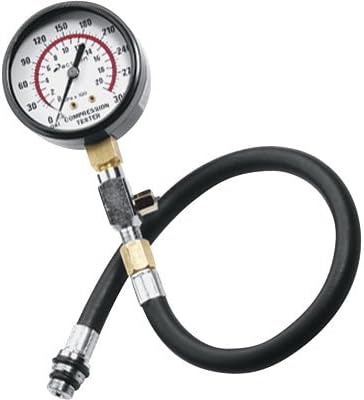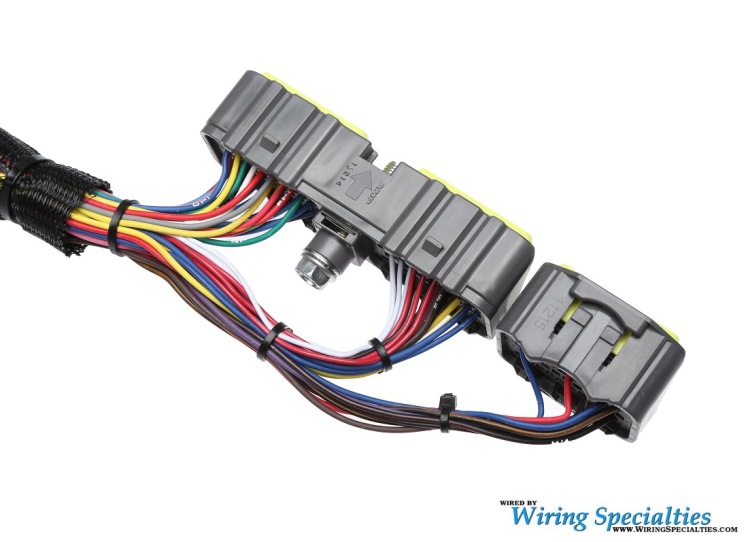Measurement of Compression Pressure
If you’re even the least bit serious about working on cars, you should own a compression tester. With good basic models available for less than $20, there’s no reason not to have one. Here’s the one I take with me when I go look at a car for sale: Compression tester

Here’s the steps to follow:
1. Warm up engine.
2. Turn ignition switch off.
3. Release fuel pressure (remove line from fuel filter, OR on a newer car, pull the fuel pump relay or fuse and turn ignition on, then off)
4. Remove all spark plugs.
5. Disconnect distributor center cable or coil wire.
6. Attach the compression tester to No. 1 cylinder (thread it into the spark plug hole by hand).
7. Have a helper press the accelerator pedal fully to keep throttle valve wide open.
8. Crank engine (let it turn over 7 times) and record highest gauge indication (write it down!)
9. Repeat the measurement on each cylinder as shown above.
Note: Always use a fully charged battery to obtain consistent engine revolution.
Healthy gas engines typically have compression readings between 125 and 180 psi. The deviation between the maximum and minimum readings should not exceed 10% on a healthy engine. In this instance, if our highest reading is 179, our lowest reading should be above 161.
If cylinder compression in one or more cylinders is low, pour a small amount of engine oil into the cylinders through the spark plug hole and re-test compression.
- If adding oil helps compression, piston rings may be worn or damaged. If so, replace piston rings after checking piston.
- If pressure stays low, a valve may be sticking or seating improperly. Inspect and repair valve and valve seat.
- If compression in any two adjacent cylinders is low, and if oil does not help compression, there is a leak past the gasket surface. If so, replace cylinder head gasket.
- If compression ratio is low on all cylinders, you either have a jumped timing chain/belt or worn out cylinders.







